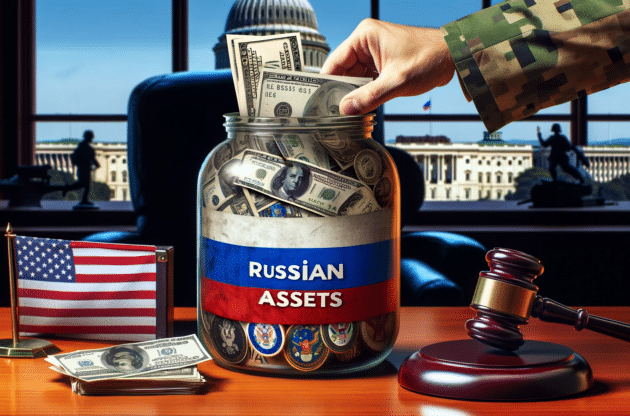When Russia invaded Ukraine in 2022, Washington levied sweeping sanctions against Moscow.
Now, Washington is investigating legal ways to seize $300 billion of frozen Russian assets to help fund their Ukraine support efforts.
Nobel Prize–winning Yale economist Robert Shiller cautioned President Biden to carefully consider the potential economic impact of an asset seizure:
“If America does this to Russia today…,” said Shiller in a recent interview, “then tomorrow it can do this to anyone. This will destroy the halo of security that surrounds the dollar and will be the first step towards de-dollarization, which many are increasingly confidently leaning toward, from China to developing countries, not to mention Russia itself.”
So far, the White House has not publicly declared plans to seize Russian assets, but…
The UK, Japan and Canada have backed Washington’s urgent proposal to discuss the legality of potential asset confiscation and have policy options ready for a potential G7 (Group of Seven member states) meeting around February 24, 2024—the second anniversary of Moscow’s Kyiv offensive.
It’s a tenuous situation…
And Russian state-owned media website Russia Today says:
“Kremlin spokesman Dmitry Peskov warned that any country considering the move should understand that it would face an immediate mirror response from Moscow.”
Financial Times says, “Russia has also warned it would cease diplomatic relations with the US in response.”
Concerns over the conflict are spreading throughout European nations, and FT reports Italy, France and Germany “have expressed some reservations and the need to carefully assess the legality” over Washington’s tentative plans “before decisions are taken.”
Why the urgent push to consider asset seizure?
In part, because the Administration’s 100-billion-dollar foreign defense aid package has been blocked in Congress by Republicans.
In December, The Wall Street Journal reported the White House said it “will be unable to continue [its military aid] … if Congress doesn’t approve additional funding by the end of the year.”
In a letter to congressional leaders, White House budget chief Shalanda Young said, “We are out of money and nearly out of time” and indicated the Defense Department has already spent $62.3 billion—97% of its military funding to Ukraine.
So, it looks like…
Washington may need Russian assets to help Ukraine.
The New York Times says, “U.S. and Europe Eye Russian Assets to Aid Ukraine as Funding Dries Up.”
And: “Seizing such a large sum of money from another sovereign nation would be without precedent, and such an action could have unpredictable legal ramifications and economic consequences.”
As part of her remarks during a 2023 news conference in Germany, Treasury Secretary Janet Yellen said, “It’s not something that is legally permissible in the United States.”
However, this legal status may soon change as funding runs thin and lawmakers coordinate with G7 nations to find workable solutions.
If they do, the question is…
What economic consequences will we endure?
At this point, it’s too early to predict what may happen.
Retrieving seized assets will be Russia’s incentive to negotiate a peaceful solution. But if the assets are consumed by Ukraine, Moscow vows to retaliate.
For now, Russia must rely on the one asset a foreign government cannot seize from a state’s vaults: monetary gold.
Over the last couple of years, in response to US sanctions, The Central Bank of Russia significantly increased their gold purchases… as have several other “spooked” central banks who have been repatriating their gold over fears that an economic precedent may be set by the US.
Some analysts say…
This massive and continued buying, repatriation and hoarding has put upward pressure on the price of gold.
And it’s reasonable to believe Russian asset confiscation will escalate this trend.
Stay vigilant.
Or call 888-529-0399 to schedule a free consultation with an experienced Gold Specialist. There’s no obligation.

